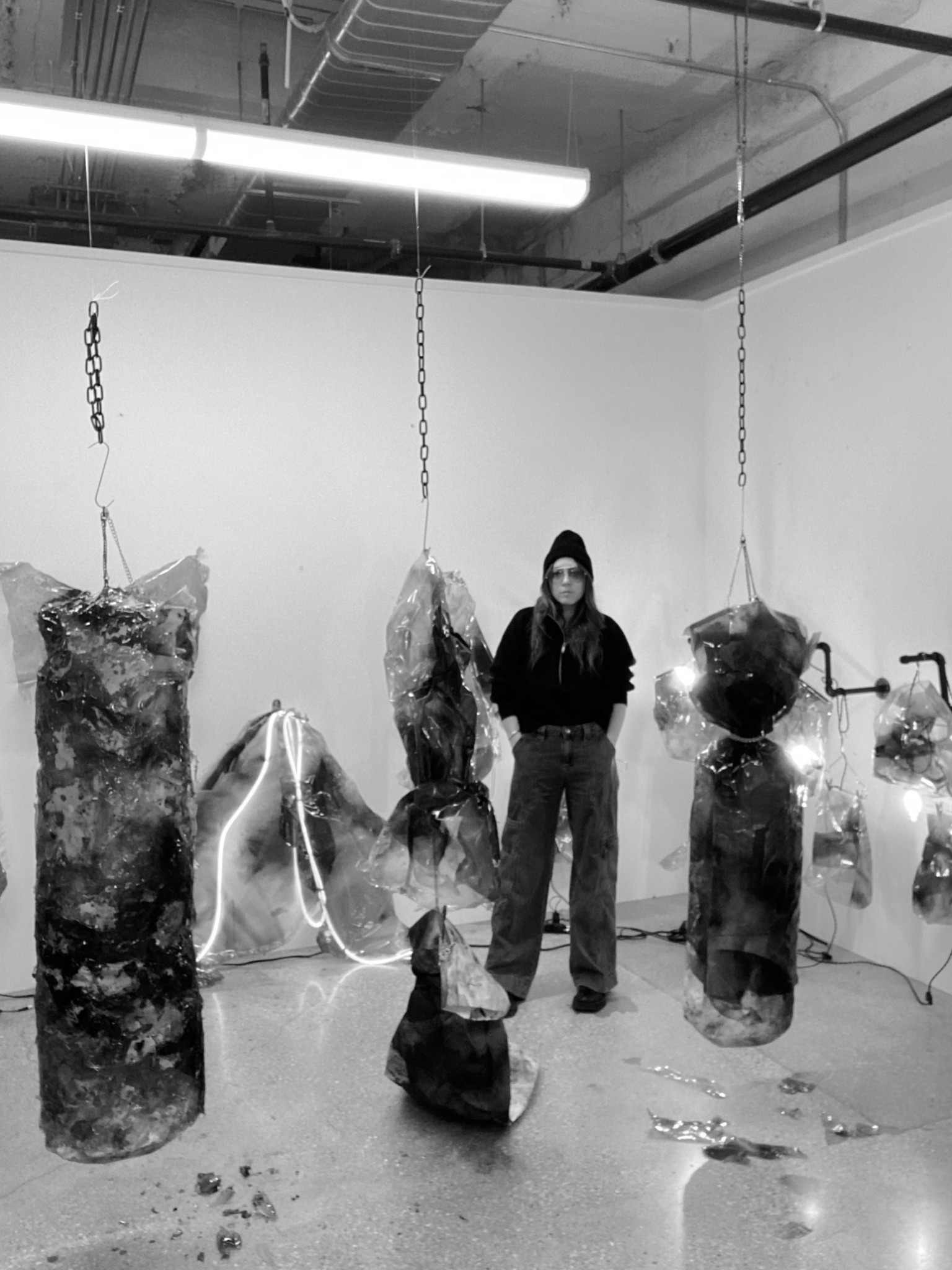We were lucky to catch up with Michelle Alexander recently and have shared our conversation below.
Alright, Michelle thanks for taking the time to share your stories and insights with us today. Do you wish you had waited to pursue your creative career or do you wish you had started sooner?
OK, here’s a little bit about me: my name is Michelle Alexander, and I am an artist and curator living and working in Chicago. I’m a recent graduate from the School of the Art Institute of Chicago, where I received a master’s degree in fine arts. I don’t think being an artist was always so obvious for me, yet art-making and creating was always a part of my life. Making art was the only thing that made sense to me, but I think I had a hard time thinking of myself as an artist. It’s difficult for me to think about when I started and where I was at in my life because art has always been a part of my journey, but only recently do I consider myself to be an artist.
If I could go back in time, do I wish I had started my creative career sooner or later? Hard to say; my path here wasn’t exactly linear, but looking back, it makes sense. When I was an undergrad, I studied fine art and received a Bachelor of Fine Arts from the University of Miami. Art was the only logical thing I could study and the only thing I was interested in. However, throughout my undergraduate career, the art world seemed very scary and uninviting to me. Upon graduation, I had this epiphany that I actually needed to create wearable art and go into fashion design. So I went to study at Parsons, the New School of Design in New York and got an associate’s degree in fashion design.
Then, I went on to work as a designer in New York for many years. It wasn’t what I expected. The toxicity of the fashion world and the grind of the city, partnered with a horribly abusive boss, broke me. But it led me to where I am today and gives so much substance, narrative, and back story for my art, my practice, my relationship to my body, and the person I am today. Without any of that, I wouldn’t be able to make the art I’m currently making. It’s all about the experiences I’ve been through and trying to get them out of my body, trying to create works and spaces for people to see themselves in. The work creates a space for a confrontational dialogue to take place, a moment of reckoning. Creating a safe space for people to be seen, to be heard, and to just feel. I think if I had started any sooner, I wouldn’t have ended up where I am now, and I’m so thankful for where I am now. That said, the art world is still an elusive, exclusive, confusing place in which I feel like an imposter. I don’t know what would have happened if I had started later, maybe I would have some more shit to process, get out and make about, but that will come anyways with life. Having lived through all the bad and confusing times, I’m sure in the moment, I would have done anything to change my circumstances, but I guess in some way, I’m thankful for them. They have made me this weird mix of a very strong yet very vulnerable person, and I think that makes its way into my art and makes it relatable.
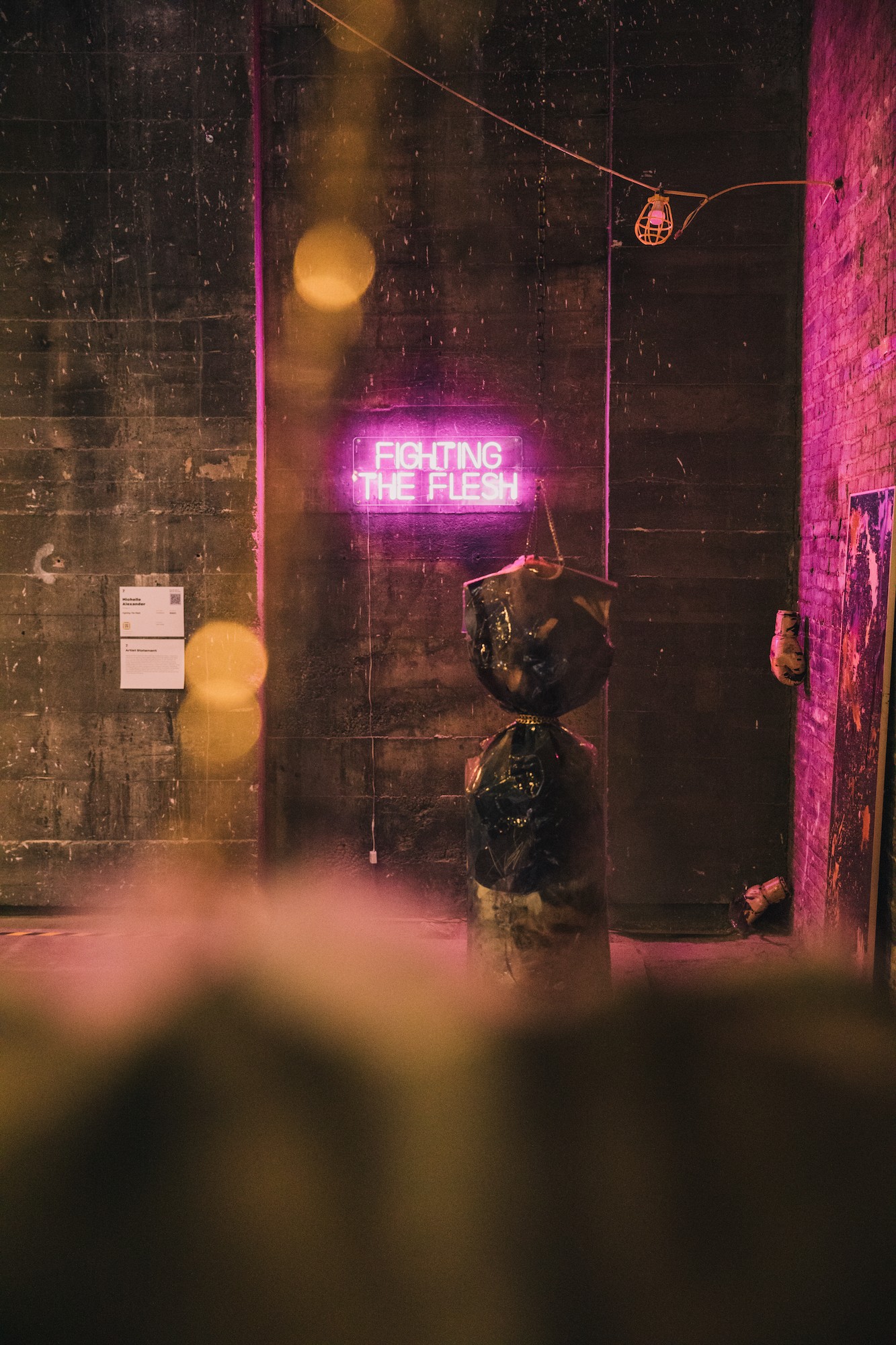
Michelle, before we move on to more of these sorts of questions, can you take some time to bring our readers up to speed on you and what you do?
My work is about grappling with experiences of the flesh and the discomfort of fitting into one’s skin. My interdisciplinary and process-driven approach to creating work addresses tension. Through my work, I do the following: -Unpack a crumbling self-image and the loss of personal value, attempting to make visible the unseen.
-Play with the dynamic relationship between the physical act of creating and destroying by studying the value the works carry versus the loss of value reflected by the changes I make to them.
Take away the precisions of the images and materials themselves, devaluing them to inform the meaning.
-Realize how the work that I create is intertwined with the imagery produced.
-See and use my materials as a body, as the skin, as the connections between our insider and outsider worlds.
I am a visual artist whose practice consists of sculptural photos and paintings that create larger installations for a viewer to enter. While I have been making art for as long as I can remember, it stems from this need to create or urge to always be creating. I always loved art. It was a creative outlet for a very anxious child and teen. I always feel like something is off or a piece of me is missing when I have no creative practice. I used creativity, whether making art, picking outfits, or getting dressed, to channel my anxious energy into something tangible and positive. Art is an amazing outlet and way to process the world and yourself. It is a way to try to get things out of you and make sense of things. If you can get thoughts out of your mind and turn it into something else, it’s an interesting exchange.
Going into undergrad, art was the only thing that made sense. It was the only thing I could see myself doing, and I wanted to attend an art school. The School of the Art Institute of Chicago was my dream at the time, but after many long conversations with my parents, they talked me into going to a University to get a “real” undergraduate experience; somewhere I could study art but have experiences, to go somewhere with a football team, Greek life, and school spirit, a school you might see in a movie. They didn’t want me to regret anything and told me I could always study art more intensely later in life, should that be my path. I went to the University of Miami (Miami, Florida), where I studied Fine Art, and I loved it. I was able to try out so many different art disciplines and felt supported to try out as many other things as possible. I ultimately graduated with a Bachelor’s degree in Fine Arts with a concentration in Painting and Photography.
In my final two years at Miami, I thought fashion would be the forever path my artistic pursuits were leading down. I had interned one summer at a design house in New York and fell in love with creating wearable art. The whole process was a way to be creative and merge all my interests into one. I was very intimidated by the art world at the time. I thought I could never fit into it, and for some reason, I thought the fashion world would be a kinder, more welcoming place. When I graduated from the University of Miami, I went straight to Parsons in New York, where I got an Associate’s degree in Fashion Design. I loved every second of being in design school; it was everything I thought it would be and more. Parsons pushed me and my creativity so much. It was a crash course in being a fashion designer, or so I thought at the time. But my work experiences were nothing like that. I was pretty much chained to a computer at every job, making technical packages to send overseas, emailing overseas, emailing factories, ordering fabrics, and approving lab dips. I was only able to be creative for about one week a season, and it just didn’t fulfill me creatively.
I am Canadian, so I was on a work visa, and my visa was tied to my job. If I were to move jobs, I would have to be sponsored by my new company. I wanted to stay in New York; my whole life was there, and the city was so stimulating and fulfilling creatively. I ended up moving to a different company, and after I was hired there, my boss was let go, and another boss was brought in. She did not like me, which created a very challenging, hostile work environment for me. It was never about my work; it was always about me as a person. She just did not like me; it was like the Devil Wears Prada. She would ask me, “Why aren’t you skinnier? Why do you walk so slow? If you’re always on a diet, why isn’t it working? I don’t like your clothes today, you can’t come to the photo shoot” amongst other things, I’m still working through. Work became a minefield for me. It was hard because I respected her so much as a fashion designer. After a year of putting up with her verbal grenades, I finally got the courage to say something to the CEO.
Within a week, I was moved to a different line that I loved, but I was so broken as a person; she had taken who I was from me. It is a bizarre thing to say or even understand, but I didn’t even know who I was anymore; I was a shell of a person just moving through life. My new boss and team were amazing, and the clothes we designed were beyond remarkable. I should have loved every second of it, but I was still shattered. My personal life was unraveling, and I had a quarter-life crisis. I felt like I was underwater, so I quit my job and decided to move back to Montreal and try to figure things out.
I decided I would start my own line of basics and really be in charge and be the creative head, but I soon realized that was again only part of it. If I were my own boss, I would have to do all the other business and corresponding stuff. While I was trying to get that off the ground, COVID happened, and not only did my little line that I was trying to start shut down, but the whole world shut down.
I took that time to figure out what was missing in my life and why I was so unhappy. I realized that the only time I could remember being happy was when I was making with my hands, in school, making art, making clothes, making things, and trying to get stuff out of my body and into the world. So, I started making art again just for myself. I started painting and drawing because I had time and was trying to process what was happening. I made a lot of terrible COVID art, but it was my way of understanding the world, myself in the world, myself, and my body. That time was so scary but also valuable to me, and I decided to go back to school.
Going to Graduate school is a huge commitment and a huge expense. I decided to go into a Post Baccalaureate program at The School of the Art Institute of Chicago, which is a kind of Master of Fine Arts crash course. They push you to turn out enough work to sustain a studio practice and to make the best portfolio possible to hopefully get into a Master’s program. I fell in love with it again. I loved the school, the structure, the challenges, and the community. I decided to take the leap and apply to Grad schools for a Master’s.
Luckily, I got into The School of the Art Institute of Chicago, so I was able to stay on. Grad school was an extremely vulnerable and terrifying place to make art, but at least I felt comfortable where I was. I pushed myself to make crazy work that scares me to this day, but I’m so thankful for the time, community, and everything I learned during grad school and all the shit I went through before because, without any of that, I wouldn’t be able to make the art that I’m currently making.
My work is all about the experiences I’ve been through, trying to get them out of my body and trying to create this confrontational dialogue between the viewer and the art. To have this moment of reckoning and to make this safe space for people to be seen and to feel heard.
I don’t know if I’m solving any great problems in the world, but I hope I’m creating a space for people to be vulnerable and to see themselves in my work. It’s about the discomfort of being a human being in a body, of being in our skin, of being trapped by our skin, fighting ourselves, and being stuck with ourselves and wanting to get away from ourselves and always ending up back at the beginning. I think if I have these thoughts, other people must have these thoughts. If I’m creating a space where these questions can be asked, then people can be vulnerable enough to ask themselves these same questions, see themselves in work, and have this dialogue. So, yeah, I think I’m creating that just a space to be seen.
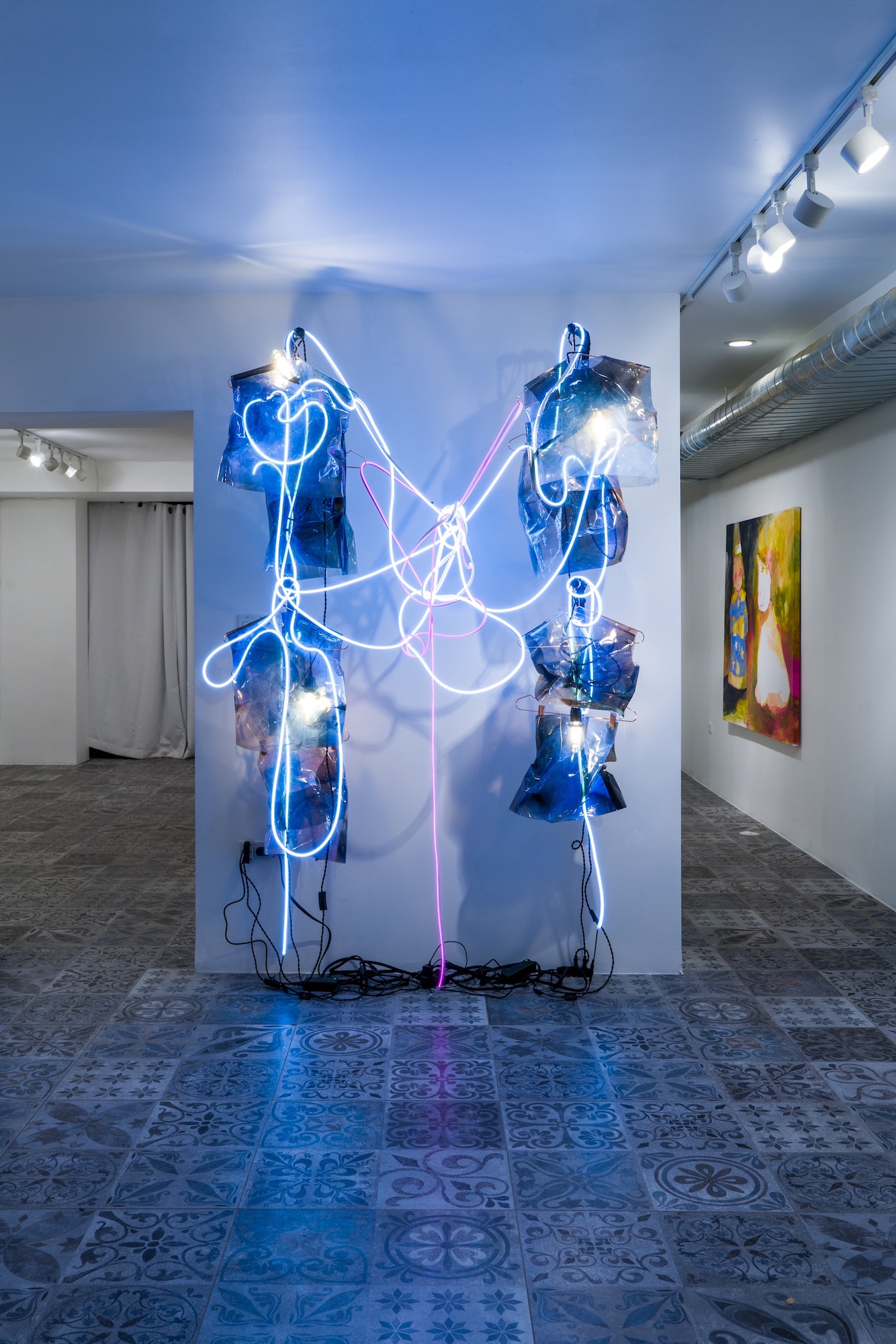
How about pivoting – can you share the story of a time you’ve had to pivot?
My whole life has been a series of pivots: -When I was younger, I was a competitive ski racer. I got injured and had to quit.
-I wanted to go to an art school but went to a university.
-I was scared to be an artist, went into fashion, was treated horribly in fashion, and made art about that time.
I would say the journey all makes sense now, even though it’s nowhere near finished and is terrifying while you’re on the ride. Trust me, I am terrified about the future and even current life that I’m juggling, but I’ve learned if you lean into the pivots, they lead you to the most fruitful places. When you must redirect, rethink, or reimagine, you open yourself up to endless possibilities. When you think you were meant for only one narrow path, you feel you have to follow what’s been laid out for you. You can’t deviate; you have to get from point A to point B correctly, but when you’re forced to make all these changes, you can actually start thinking outside the box, how to blow up the box, and about all new ways to create things. I have to constantly remind myself of this because I am a super anxious person who plans out everything. I have lists, I have lists of lists, and I want to get from point A to point B as smoothly, seamlessly, and anxiety-free as possible. But when I allow myself to kind of go with the flow, that’s when it happens. When I end up letting go and giving in, I’m talking myself into believing in the pivot.

For you, what’s the most rewarding aspect of being a creative?
For me, the most rewarding and scary part about being an artist is putting the work out into the world and creating the space for this exchange between artwork and viewer to happen. For the viewers to see themselves, to be vulnerable enough to meet the work where it is, and to be open enough to have this exchange, dialogue, and confrontation in this space is the most rewarding thing to me. Since my work is so personal, I really work hard to make it as universally enterable as possible so when that happens, it’s everything I could have asked for and more.
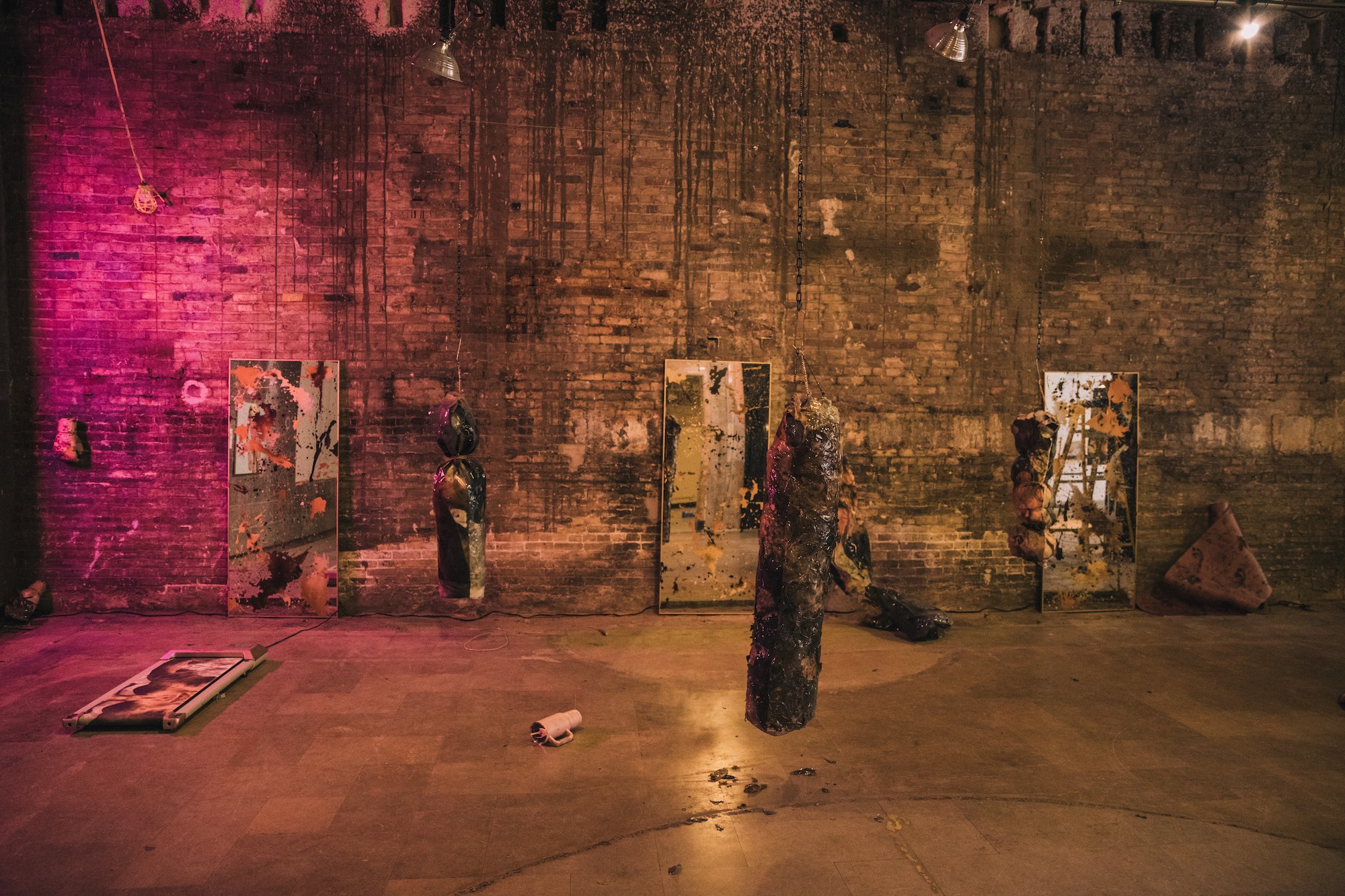
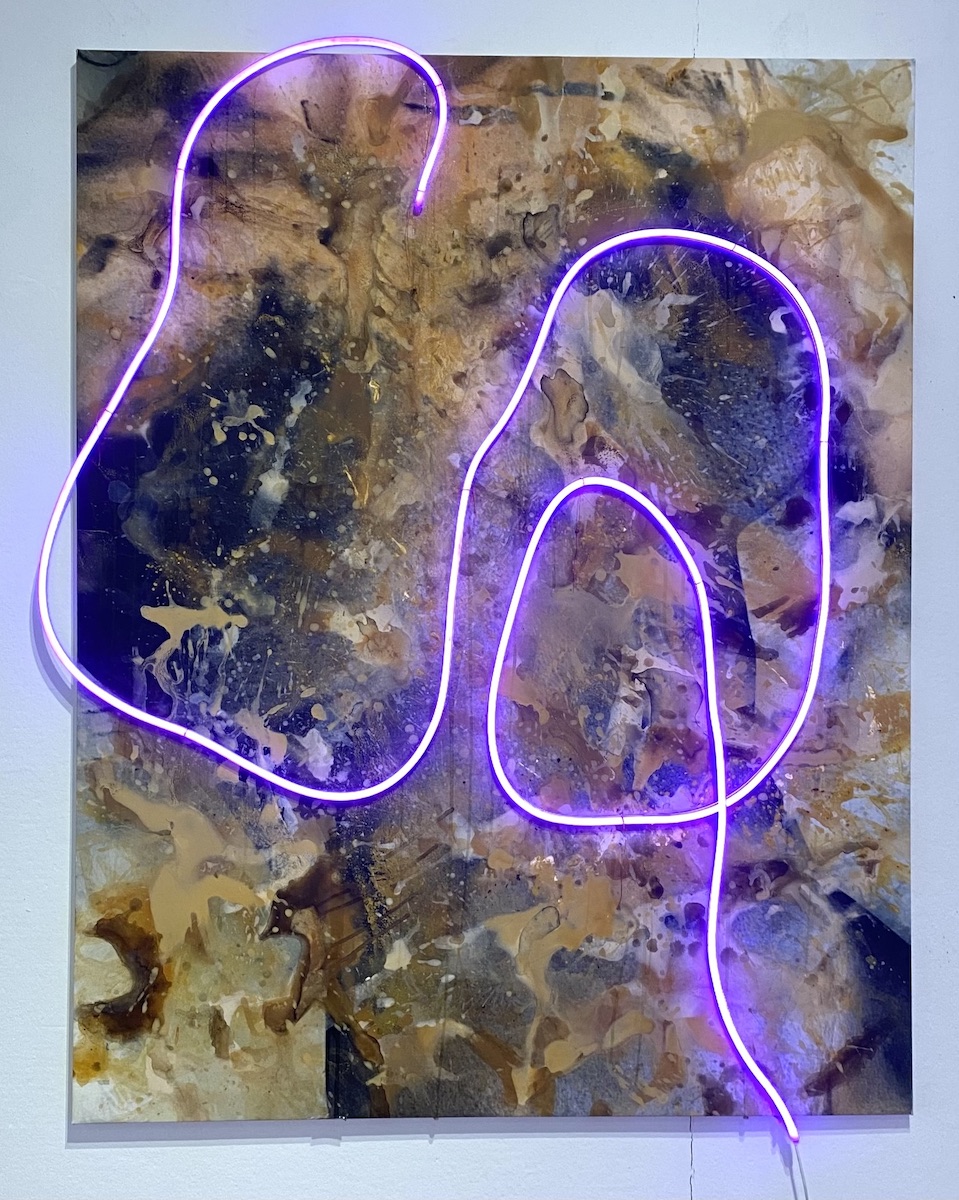
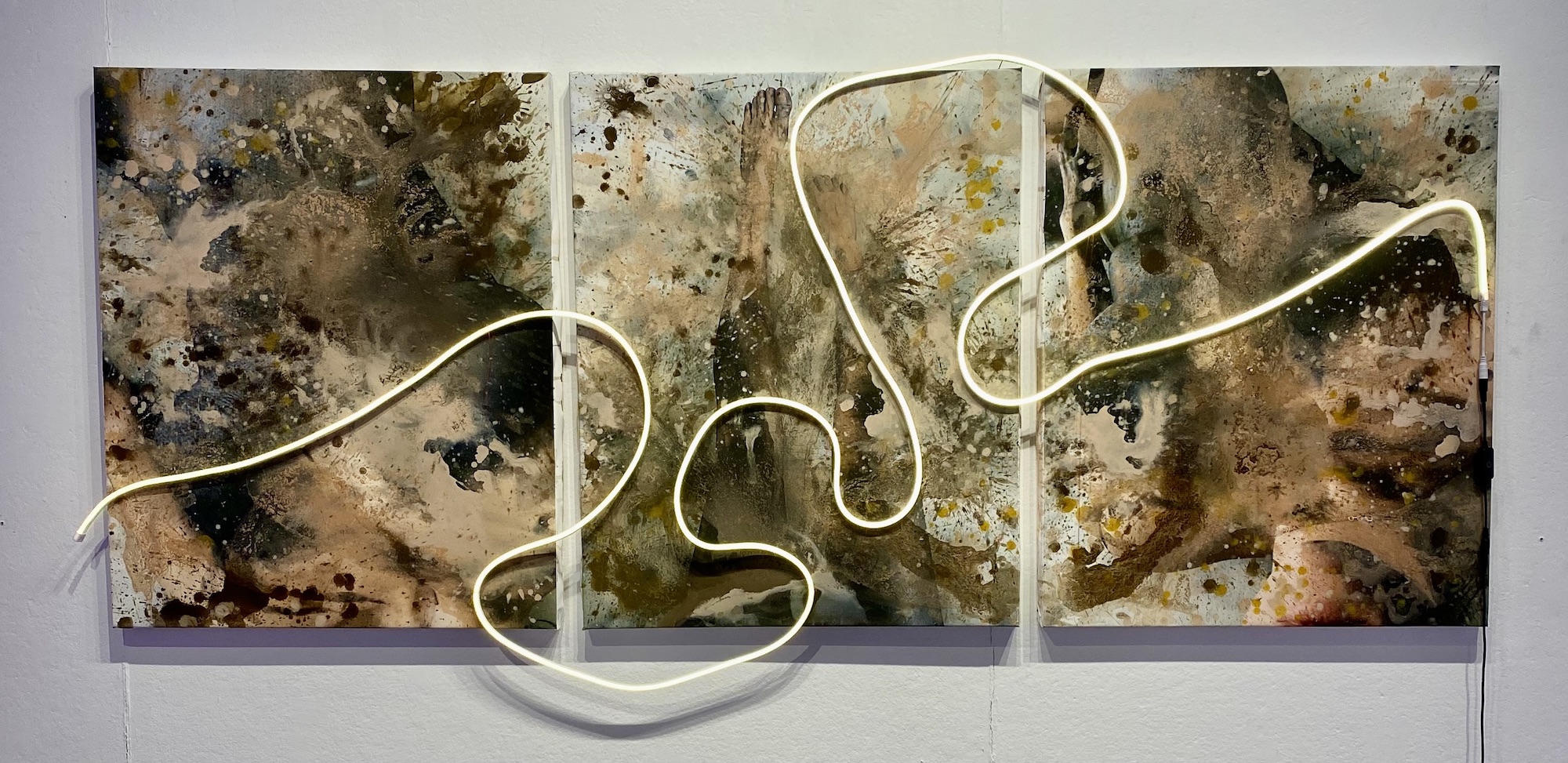

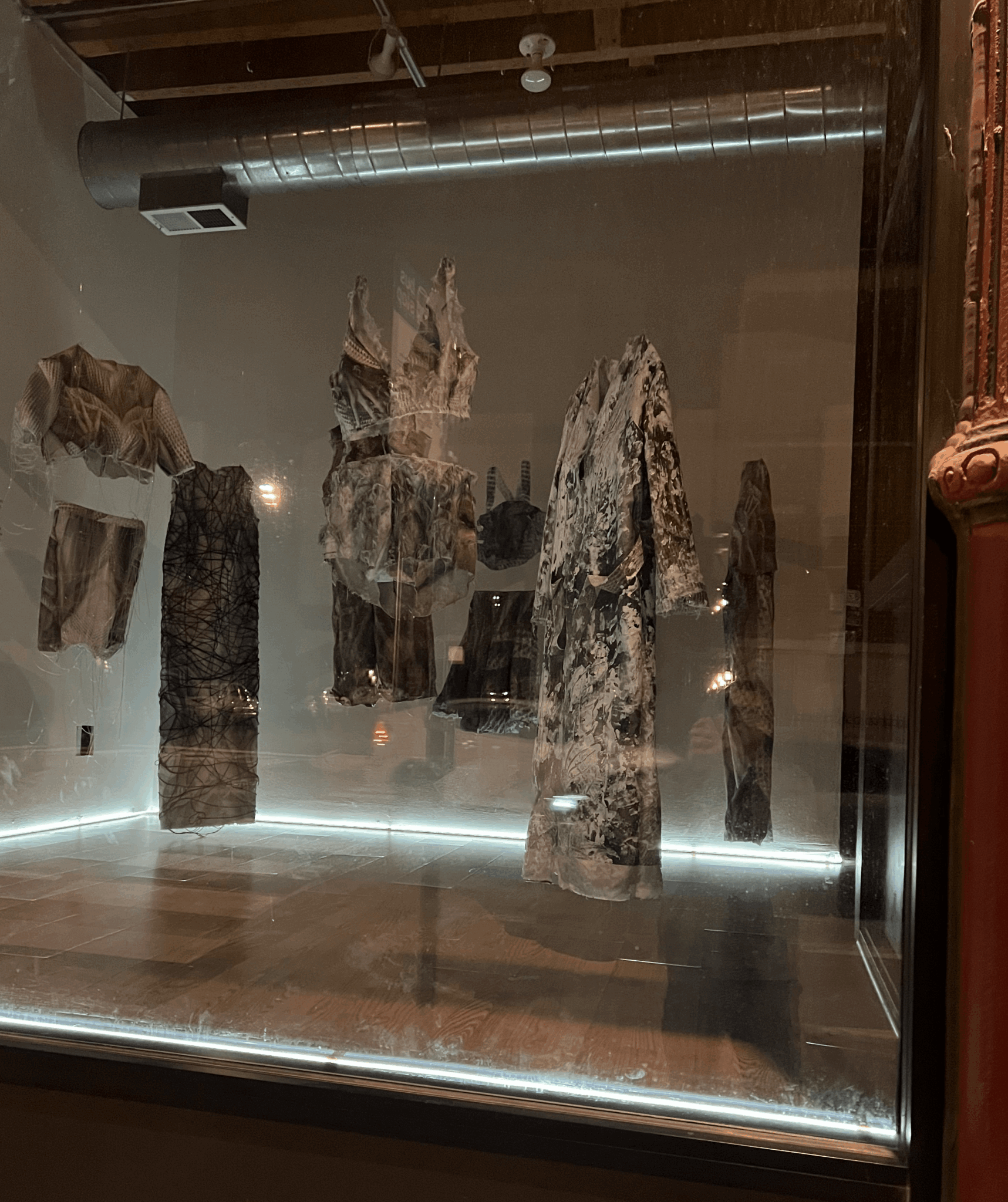
Contact Info:
- Website: http://www.michellealexanderart.com
- Instagram: https://www.instagram.com/michelle.alexander.art/
Image Credits
Jonas Mikosch Muller-Ahlheim Veronica Anderson Margaret Lindahl


